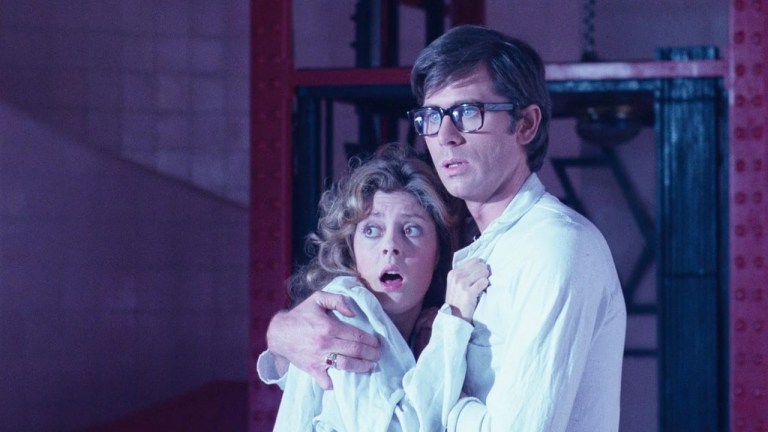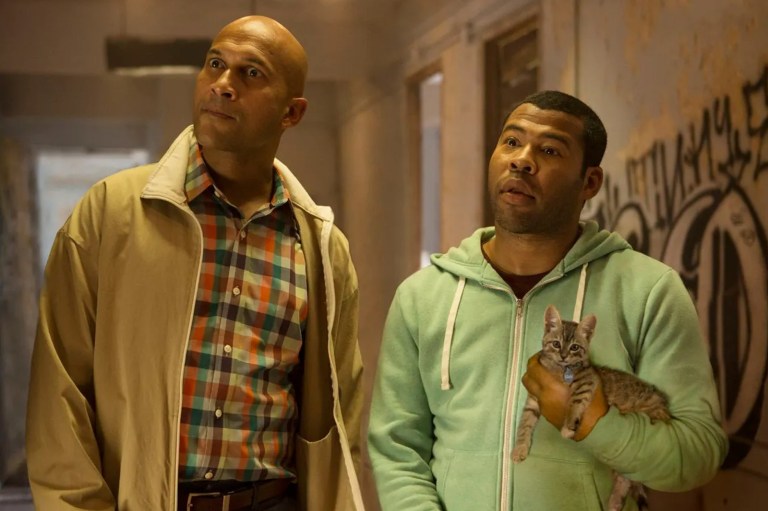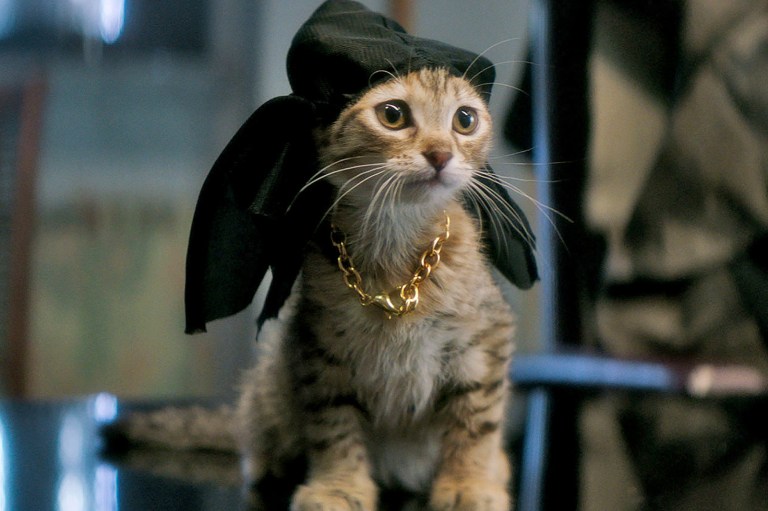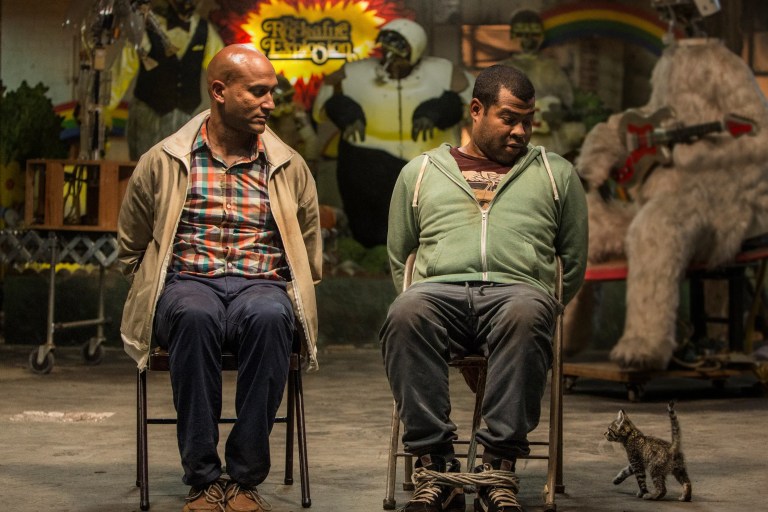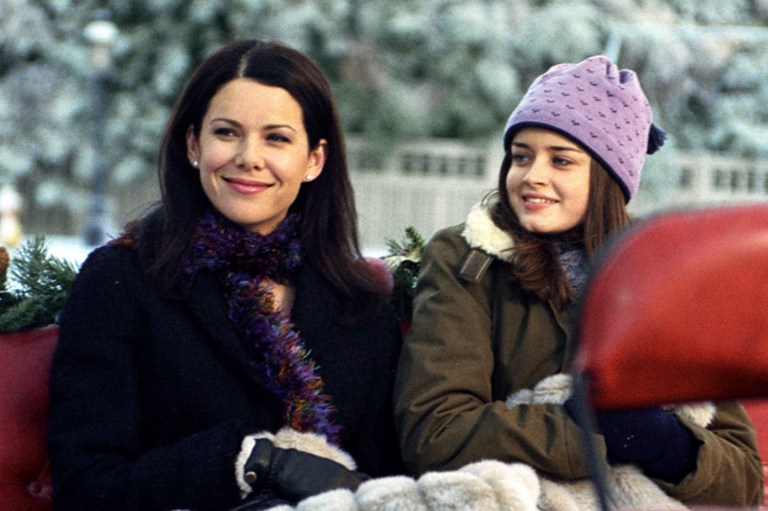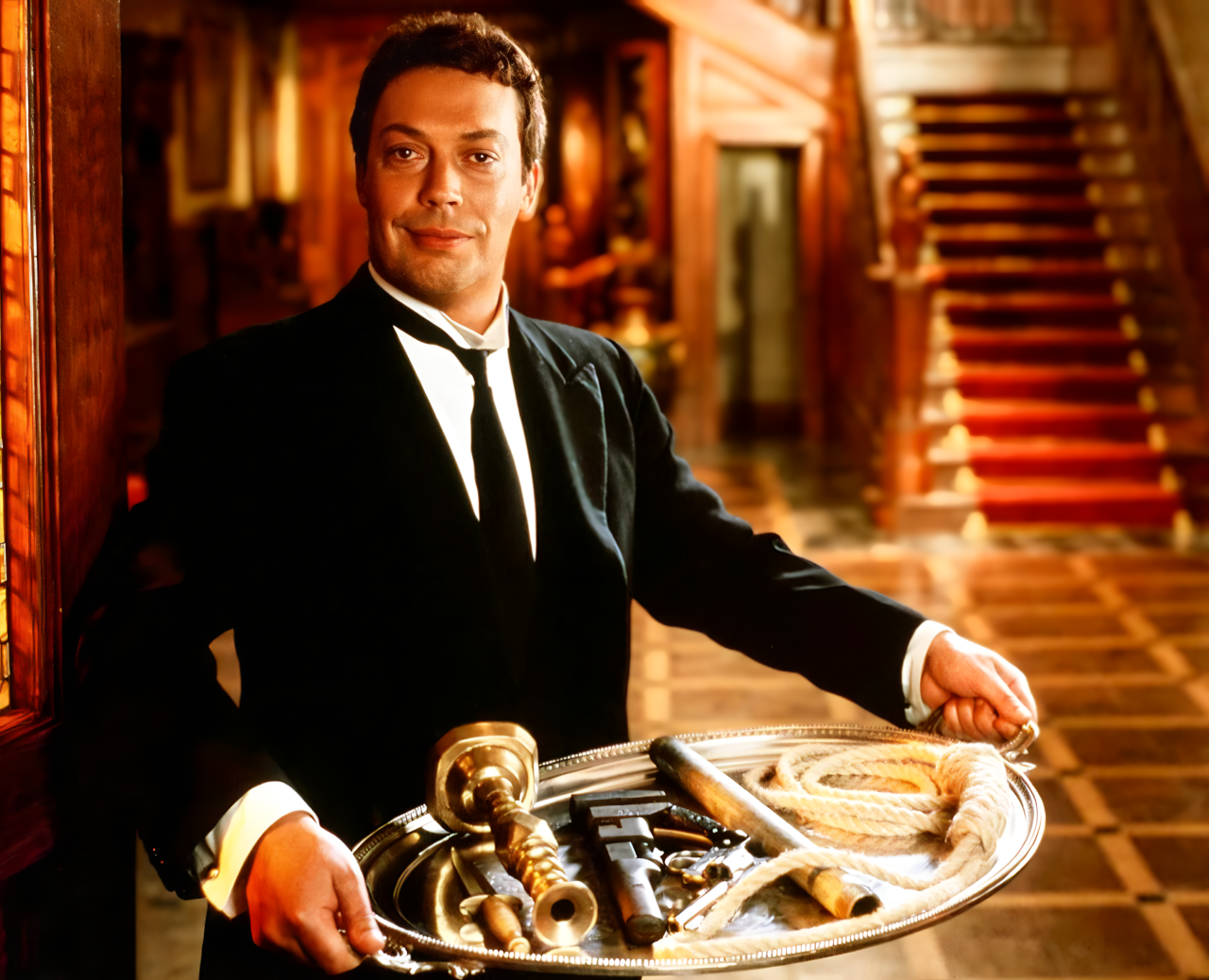
The Cult Classic ‘Clue’ Turns 40 This August, So We’re Revisiting 4 Iconic Moments From The Film
As Clue is nearing its 40th anniversary this August, take a look back at some of the movie’s most memorable moments.
By Erin Whitten
Jonathan Lynn’s Clue premiered in theaters back in 1985 to mixed reviews and a fairly lukewarm box office. Fast forward four decades, and the film has become a much-loved cult classic, both quotable and replayable with a fondly remembered cast of zany characters, impeccable slapstick timing, and ballsy double – and triple-endings. As Clue is nearing its 40th anniversary this August, take a look back at some of the movie’s most memorable moments.
The Singing Telegram
Few moments in the history of film comedy are as short, shocking, or unforgettable as the demise of the singing telegram girl. After what we think is the last laugh in the mansion’s wild night of murder, a smiling, perky young woman steps through the door, dripping with rain, and exclaims that she’s here to deliver a singing telegram. Before she can get to the second line of her song, she is riddled with bullets, tumbling to the floor. The door slams. We laugh nervously at how ridiculous it all is, repeat.
As with so much in the film, the genius of the gag is in the timing. We’ve already had a whole parade of murder victims at this point in the film, and have long since given up guessing who will go next. So when we see another silhouette at the door, we expect another elaborate sting or explanation. Instead, we get less than five seconds of exposition and the telegram cut brutally short. The filmmakers cast Jane Wiedlin of The Go-Go’s as the girl, knowing that any audience member who recognized her would experience an extra punch of irony. Wiedlin has since claimed that despite a long career in music, this five-second cameo is the role for which she will forever be known.
Wadsworth’s (Aka Tim Curry) Rapid-Fire Recap
Tim Curry plays Wadsworth, the madcap butler in Clue. During this scene Wadsworth presents a rundown of the various murder cases to the assembled houseguests. As he darts from room to room in front of the group following him, Wadsworth re-enacts each crime in broad fashion while his voice barrels along with unstoppable force. Where this might have been a straightforward detective’s narration, it instead becomes a physical and verbal tornado that simultaneously parodies and pays homage to the “drawing room reveal” of the mystery genre.
What makes the scene sing decades later is the way it simultaneously mocks and celebrates the mystery genre. Where a Hercule Poirot or Sherlock Holmes might unravel the case with cool calculation, Wadsworth instead gives us the solution as a manic blizzard, reminding us that Clue is never about logic so much as laughter. Fans routinely call the recap the movie’s defining sequence, a demonstration of Tim Curry’s unparalleled gift for comedy and a highlight of 1980s ensemble filmmaking.
“Flames on the Side of My Face”
Few Clue lines have lived on in more quote-ready afterlives than Madeline Kahn’s climactic rant as Mrs. White. When questioned on her loathing for the maid Yvette, a controlled beginning to Mrs. White’s explanation quickly slips into a shuddering fury. Struggling to choose the right words, she stammers, stops, then finally exclaims: “Flames… flames, on the side of my face. Breathing… heaving breaths…” So strange, so unhinged, and so damn funny is the scene that it seems to have caught lightning on film.
The line’s legendary status is even more iconic due to the fact that it wasn’t scripted. Mrs. White’s confession in the original screenplay only notes she “hated her so much I wanted to kill her.” Kahn, already a celebrated comic actress among her generation, expanded the moment into a bizarre, broken-word rant. Filming numerous takes, each more hysterical than the last, Lynn eventually secured the usable shot. Struggling to keep a straight face, cast and crew frantically cut away mid-sentence, and the camera only stayed focused on Kahn during her delivery.
The End 1, The End 2, The End 3
No element of Clue is more well-known than its use of multiple endings. As originally seen in theaters, viewers received one of three versions, each with a different solution. The choice was daring, coming straight from the board game, where each game can have a different killer, weapon, and room. (Jonathan Lynn even scripted and filmed a fourth ending, in which Wadsworth poisons the guests and then tries to flee the mansion, but this was deleted before release.) While the gimmick initially confused critics and angered viewers (some complained they’d been deprived of the “real” ending), it became the film’s defining feature. DVDs released the endings in sequence, allowing the fan to indulge in the bit of clever nonsense in its entirety.
The multiple endings of Clue have gained widespread acclaim from modern-day fams because they represent both a meta-commentary and a groundbreaking departure from traditional storytelling before such films became common. The thing which at the time might have felt like a studio gimmick now seems like an inspired feat of futurism, capturing the game’s essence in a novel way. More than any other decision, it helped make Clue into a film that dared to be different for the sake of daring to be different.
